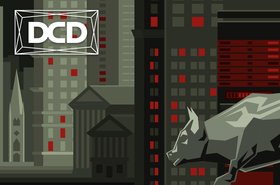Today we bring you exclusive insights from a recent workshop hosted by DCPro and led by Operational Intelligence (OI). Sophia Flucker and other guest speakers expertly discussed and analysed how the industry can overcome the challenges and pitfalls common to data centre projects.
Kolb’s learning cycle consists of four quadrants: reflection, theory, practice and experience, which are required for effective learning. Industry knowledge is aligned with each quadrant: clients in reflection, design consultants in theory, contractors and commissioning in practice, and operational team for experience.
There are important interfaces between quadrants where knowledge / experience needs to be transferred across boundaries. For example, operational lessons learned should be fed back into improving the next design. So, let's hear what our experts have to say.
Nick Russell, Projects Director at MiCiM shared his experiences of the client’s perspective
Key issues raised included:
- Ensuring the client has defined the brief allowing a proper Basis of Design to be created with relevant stakeholders including the operations team
- Type of contract; design & build or conventional - there are risks with both. Depends on speed of build and enterprise / colocation.
- Choosing the right design team, with proven experience in the data centre industry, and regional experience and who can work as a team (not in their silos). Ideally it should be one M&E team who is going to take full responsibility for the overall design, however there are few design managers with this wide breadth.
- Getting the right buy in from client stakeholders, especially from the operations teams, who are normally already very busy working on live facilities
- Getting the right contractor with data centre experience (extremely difficult). The bid detail should be carefully scrutinised including subcontractors. There needs to be a clear understanding of what each party expects from the other. It is a false economy to choose the lowest price, or second lowest price as this leads to the contractor trying to drive the cost up. For large hyperscale data centres, construction management may work better.
- Getting the programme right by thoroughly checking the detail and the critical path. Check key milestones like power availability, commissioning duration, training the operations team.
Russel Greenwood, Partner at Hoare Lea discussed the Design Consultant’s perspective
When considering design for operation, the following are important:
- Operator input into the design brief. Without this, the result is operational shortfalls and plant that is not optimised for maintenance activities.
- Balance requirement for resilience vs costs. Not all applications and businesses require Tier 4; lower resilience typically reduces complexity, CAPEX and OPEX.
- Complexity of design versus design for operation. It is quite easy to create a design that requires limited operator skillsets, e.g. consider shortage of approved HV engineers.
- Regional availability of service / parts. Avoid selecting equipment which presents difficulties for local expertise or spares availability. Can prolong periods of reduced systems resilience while waiting for a replacement of a failed part if not locally available.
Tom Absalom, Managing Director at JCA Engineering shared insights on the contractor perspective on installation and commissioning
- The contract is the legal glue that binds all parties together. Successful projects need to have the risk extrapolated across all the parties. For contracts to work, collaboration is key, with the right mindset and with singular shared objectives. If a contractor, designer or operator are contracted on terms that are not equitable, it will lead to behaviours that are not aligned with the project objectives, which is counterproductive from the outset.
- Gap between design and construction, including buildability. The design team will take the design up to stage 4, then the contractor will take it on as design and build and will have to adopt the design that has already been undertaken. There are some real benefits when the design team, contracting team and the operations team are involved / engaged earlier on. If you get the right collaboration, it helps to deliver the project faster, more cost effectively and with the right quality. This requires the right team agreeing on objectives to get the project right for the client who can put aside any contractual issues for the greater good.
- Similarly with commissioning, it is important to engage commissioning specialists early in the process. The whole aim of a construction project is to get to the point where you test the installation successfully and hand it over. Systems and Integrated Systems Testing is a unique opportunity for training data centre operators; the only time to try out different scenarios before going live. It is a block on the programme that often gets squeezed because it is near the end, but it needs all parties to respect it.
- Poor record keeping and lack of accurate records for upgrades and refurbishments in existing data centres. There is reluctance to spend the time and resources getting it right, however trying to correct it later on generally has an amplified cost and programming impact.
Aaron Ball, Global Alliance Director at CBRE shared the Operator perspective
The workplace is a people based environment, that relies heavily on the staff. Issues are:
- Data centres are critical environments supporting critical services. When you cut corners and reduce timescales for delivery, this not only increases pressure on people but increases risks massively. The last thing you want in a data centre is panic, we want that ‘stay calm’
- environment so that even in the event of an incident you able to work out what has happened and how to resolve it. The people who are best able to react have experience and have had the ability to learn through the commissioning process.
- The best experiences we’ve had are where operators have been closely involved with the build phase, seeing pieces of equipment being installed and talking to the installation engineers and design people who understand it. That transfer of knowledge is very powerful.
- between sales perception and reality. In the operations world we call it “Sell the dream and have to deliver the nightmare”. Where there is a lack of understanding of the design this can lead to inflated performance expectations and disappointment.
- Quality of staff is an issue, particularly with an ageing population of engineering staff across EMEA, we need to change our mindset on how we look into this. We need to from schools, including through apprenticeship schemes. It’s also important to cultivate the right environment, avoiding a finger pointing culture and a stressful environment; again this has an impact on performance.
Discussions with panellists and wider audience and conclusion
Many of the themes raised by the panellists were echoed by others. One of the challenges is where decisions are being made at high level focussing is on budget and programme, possibly reporting to someone overseas where they will never have the experience of the pain and destruction felt locally on the project. It is sometimes difficult to get operations voice heard and having to live with things that have not gone smoothly on a project. When the client starts cutting corners they are really increasing data centre risk and onto operators.
If you are dealing with people who are not from an engineering background they just do not understand the risks associated with some of the decisions they are making. If you are not dealing with the right level of people, those conversations can become very contractual, very commercial and break relationships. Before you know it, you are buried in an atmosphere and a culture which is not productive.
The “adopt and construct” trend was discussed, whereby the consultant undertakes Stage 2: concept design, Stage 3: spatial coordination and Stage 4: technical design, but the contract is written up as a “design and build” contract. The design responsibility then goes to the contractor who cannot change the design (it is sometimes known as “design and dump”).
This does not bring out the best of the contractor because they have a short time to tender without sufficient time for due diligence yet they need to put their PI and reputation against the design. This generally results in the contractor being appointed who has the highest appetite for risk, not necessarily the type of contractor that the client would want. “
Many of the recurring themes related to the commercial aspects and trade offs of different costs. This applies to training, commissioning and other things. Sometimes it’s about awareness of risk and investment.
Training, for example, may be seen as a nice to have, rather than an essential requirement (what is the risk of having an untrained team?) There are many decisions to make; what you would like to have ideally versus a compromise with the right level of risk which allows the delivery of a successful project, which will ultimately be profitable, once it is handed over and operational.
For more from Sophia Flucker and the Operational Intelligence team, click here.
More from DCD
-

-

Broadcast DCD>New York | Stream on-demand
What kind of IT infrastructure do future enterprise IT workloads need? -

Credential DCP - Data Center Practitioner


